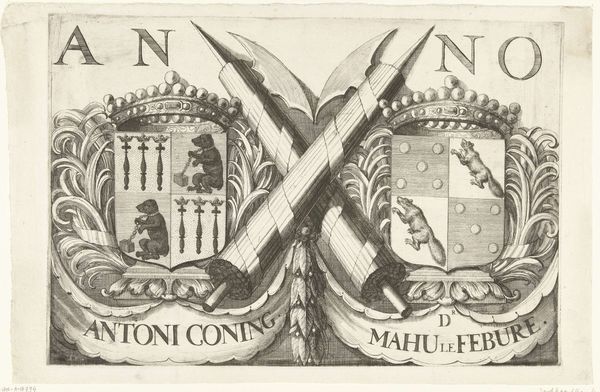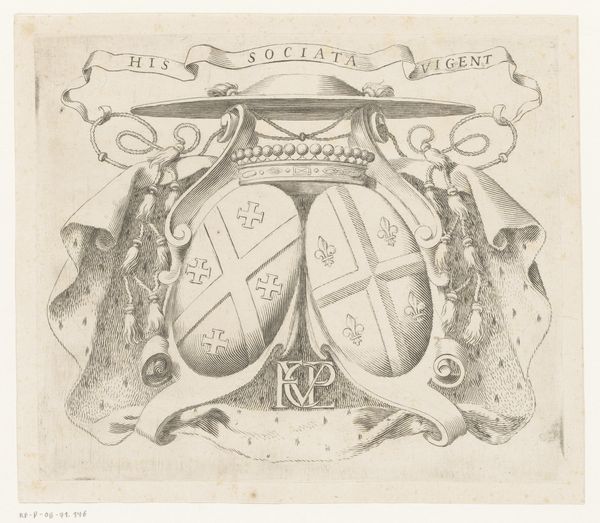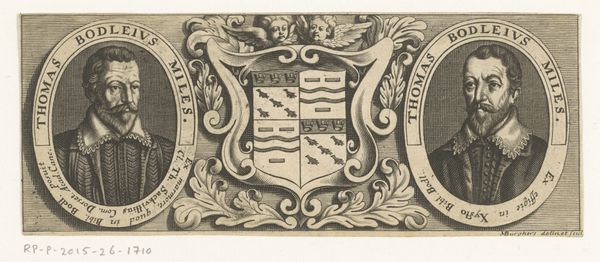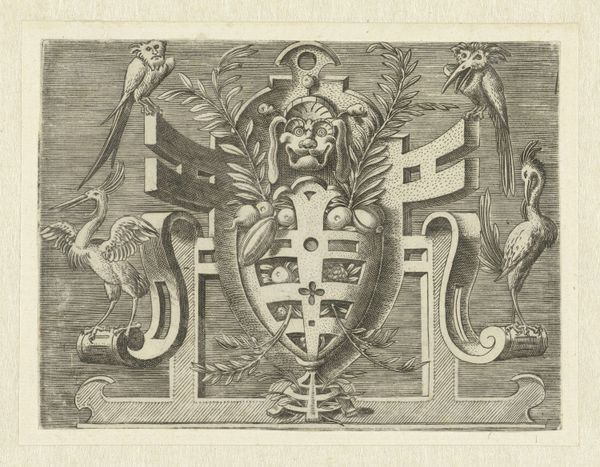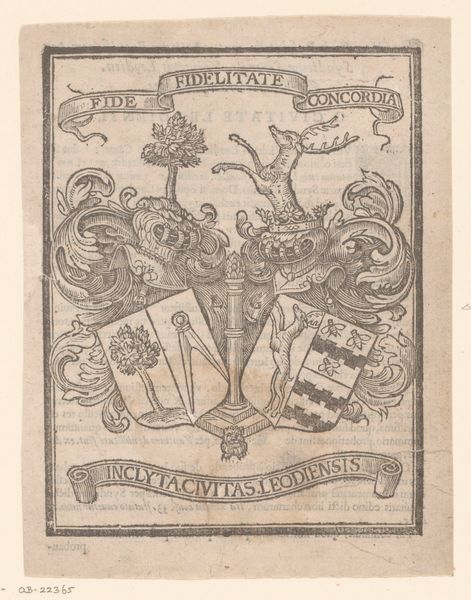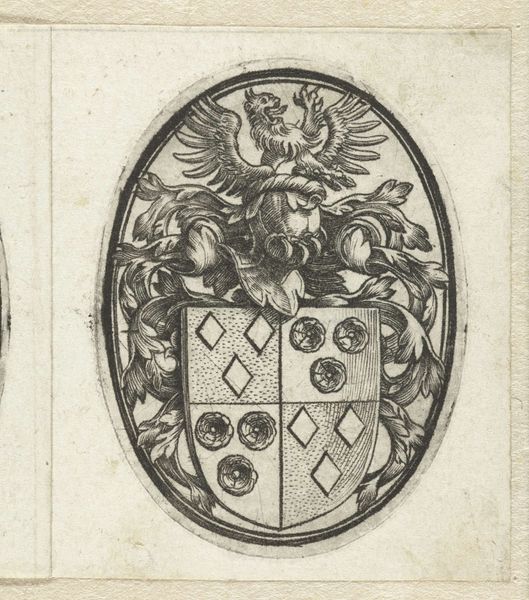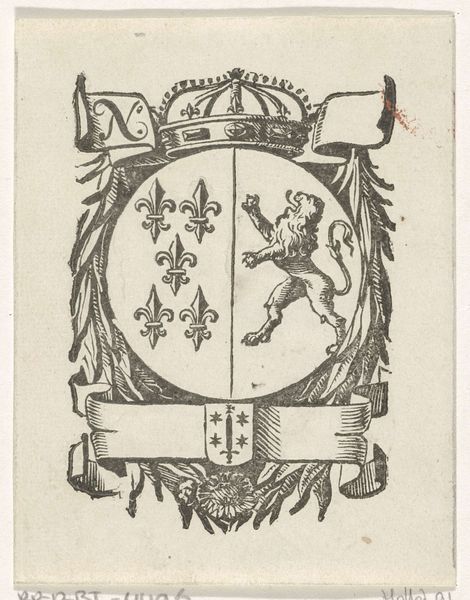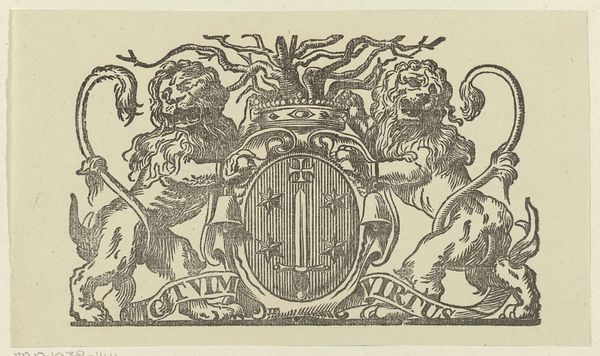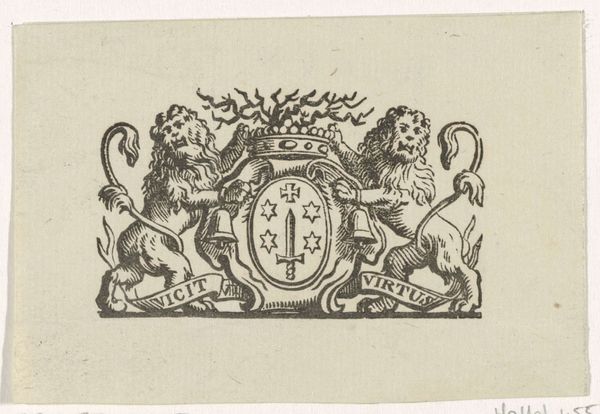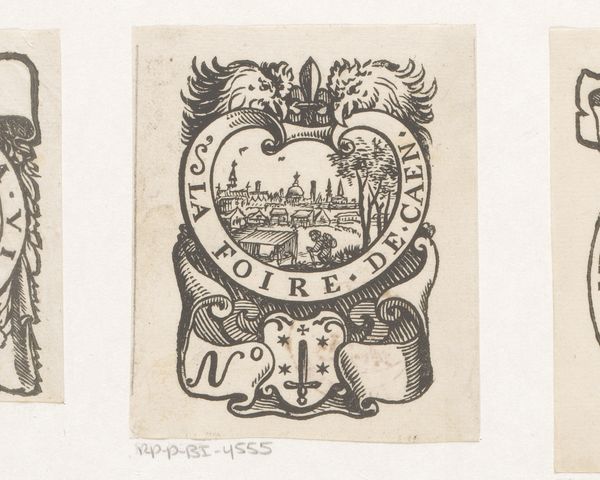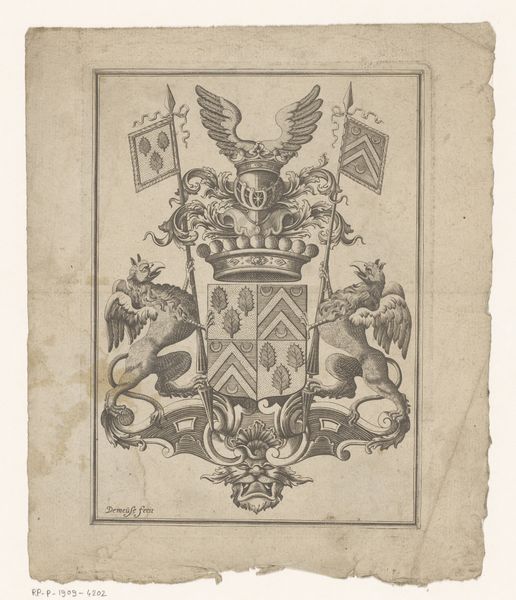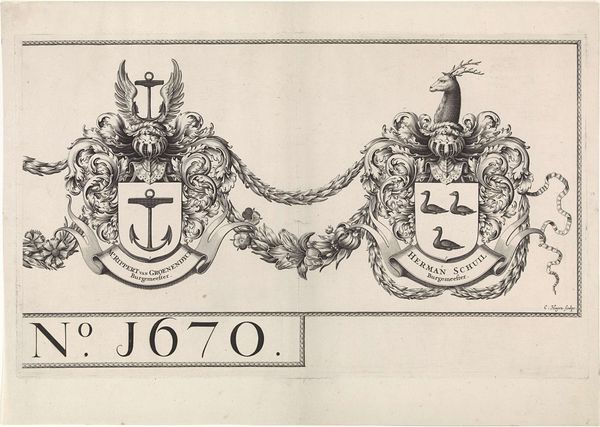
graphic-art, print, intaglio, engraving
#
graphic-art
#
baroque
#
pen drawing
# print
#
intaglio
#
geometric
#
line
#
decorative-art
#
engraving
Dimensions: height 257 mm, width 387 mm
Copyright: Rijks Museum: Open Domain
Editor: This intricate engraving from 1688-1689 by Romeyn de Hooghe, titled "Wapens van 'Willem Fabricius' en 'Salomon van Echten'," presents two crowned coats of arms with crossed axes. I find the detail incredible; each crest is unique. How might we interpret the social meaning embedded within this print, given the context of its creation? Curator: Indeed, its visual density tells us much about its function and intended audience. These aren't merely decorative flourishes. Consider that in the late 17th century, heraldry played a significant role in defining status and legitimacy within the Dutch Republic's power structures. This print, reproduced in multiples, aimed to publicly assert the importance of these families. Editor: So, it was a form of early public relations? How did prints like these circulate? Curator: Precisely! Prints served as a vital medium for disseminating information and shaping public opinion. This print would likely have been commissioned by the families themselves for distribution amongst their peers, clients, and political allies, to broadcast their lineage and, by extension, their authority. The prominent date, 1688-89, falls within the era of the Glorious Revolution in England. Can you speculate on why these families might want to underscore their significance during such a period of upheaval? Editor: Perhaps as a reminder of stability and established power during uncertain times? Showing that their families, with their historical claim of relevance, should still be considered during times of potential government restructuring? Curator: Excellent point. Think about the messages conveyed through the visual symbols within each crest – crosses, fleurs-de-lis, lobsters. Each element reinforces a particular narrative of lineage, occupation, and perhaps even political allegiance. The coats of arms themselves acted as logos or brand names. Editor: It’s fascinating to see how art functioned within the political landscape. The level of thought and intention behind something seemingly decorative is striking. Curator: Precisely. Analyzing the cultural history helps reveal layers of meaning often overlooked, and emphasizes the critical public role that art, including prints such as this, served in the 17th century. I encourage you to dig more into this area.
Comments
No comments
Be the first to comment and join the conversation on the ultimate creative platform.
